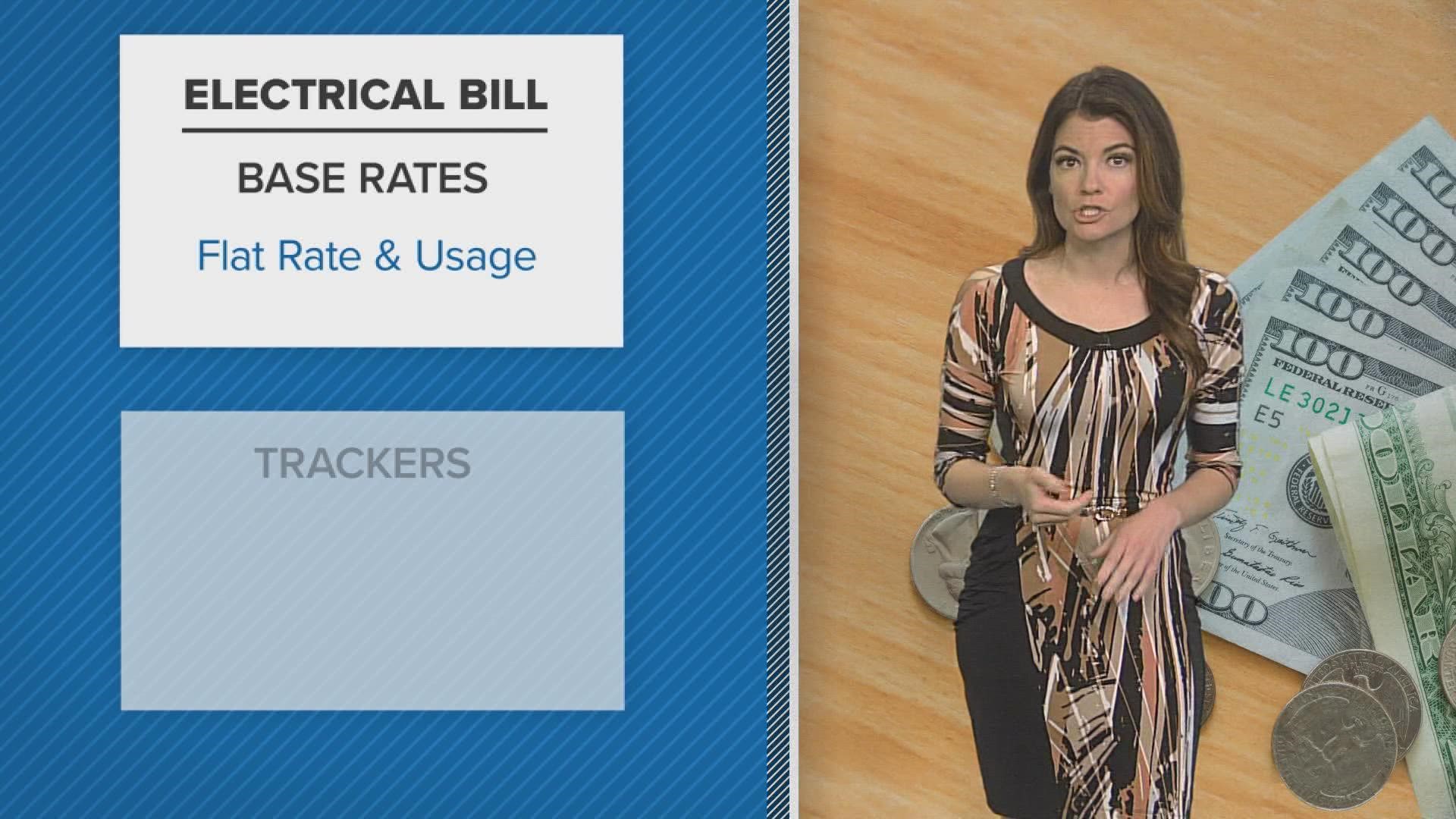INDIANAPOLIS — An electric bill can be broken down into two parts: base rates and trackers.
Base rates don't change often and factor in your usage.
Trackers, on the other hand, are additional costs that can change multiple times a year. These, in part, allow utility companies to recover money.
If the price of raw materials, like coal and natural gas go up, power companies can ask the state to reimburse themselves.
Utility companies can do this as long as they don't profit from the increases.
Olivia Rivera with the Office of Utility Consumer Counselor, or OUCC, said the process starts with the utility company filing a case.
"We take a look at everything the utility files and we're making sure that all of that information is accurate," Rivera said.
The OUCC represents consumers when utility companies ask the state for the 'ok' to charge consumers trackers. The OUCC can make recommendations, but does not have the final say.
Recently, they've asked utility companies to spread out fuel trackers over a longer period of time to lessen the burden on consumers.
For example, AES asked the state to temporarily charge customers who average 1,000 kWh an estimated $24 extra per bill.
But after the OUCC stepped in, the parties landed at an estimated $15.79 increase. The fuel tracker affects bills in September, October and November 2022.
AES requested another fuel tracker starting in December that could add an estimated $8 to a bill. The case is pending.
Base rates make up approximately 87% of a typical AES Indiana residential electric bill according to the OUCC.
As for Duke Energy customers who average 1,000 kWh, their temporary fuel tracker is around $11.71 affecting October, November and December 2022 bills.
"A lot of this information is public record. So if consumers are curious, they can actually take a look at that," Rivera said.
Base rates make up approximately 81% of a typical Duke Energy residential electric bill according to the OUCC.
Help with bills
If you can't make payments and live in Marion County, United Way's Winter Assistance Program opens Nov. 1.
Lydia Watson with United Way said this fund is largely for those who do not qualify for the energy assistance program.
"We're really targeting those households who get turned down anywhere else," Watson said.
The goal, Watson said, is to get people help sooner than later.
"They don't have to be in disconnect service. They don't even have to have a past due bill," Watson said.
United Way is accept WAF applications over the phone, via email, and in person. It varies at each site, but no applicant is filling out an application online.

